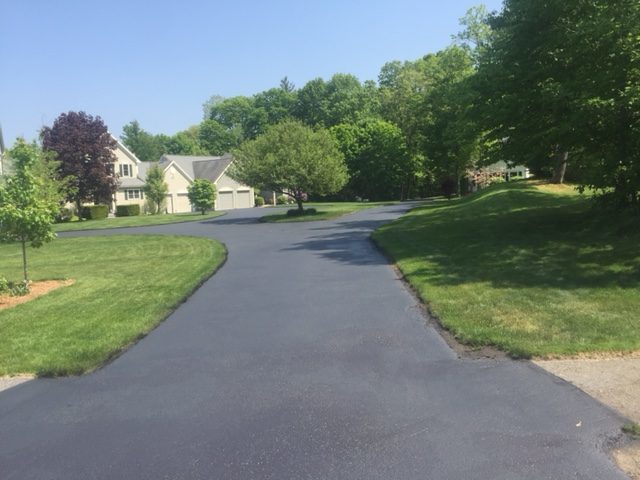Hot Mix Asphalt: A Sustainable Solution for Pavement
Hot Mix Asphalt (HMA) has emerged as a leading sustainable selection for sidewalk options, supplying a myriad of innovative modern technologies and ecological benefits. As the demand for environment-friendly construction methods expands, discovering the nuances of HMA's sustainability can offer important insights into the future of pavement services.
Ecological Advantages of Warm Mix Asphalt

In Addition, Hot Mix Asphalt aids to minimize metropolitan warm island results. Its dark shade soaks up sunlight, minimizing the amount of warmth reflected back right into the atmosphere contrasted to lighter-colored pavements. This can reduce ambient temperatures in urban areas, decreasing the need for air conditioning and eventually reducing power usage.
In addition, Hot Mix Asphalt adds to enhanced stormwater administration. Its permeable nature allows water to infiltrate the sidewalk and charge groundwater products, minimizing overflow and the risk of flooding. These ecological advantages make Hot Mix Asphalt a sustainable option for paving freeways and roads.
Energy Effectiveness in HMA Production
Is energy efficiency an important element in the manufacturing of Warm Mix Asphalt (HMA)? Energy plays a substantial role in the manufacturing of HMA, influencing both cost and environmental sustainability. One crucial aspect of power efficiency in HMA manufacturing is the usage of cozy mix asphalt (WMA) modern technologies.
In addition, developments in plant technologies have actually resulted in more energy-efficient HMA production procedures. Modern plants are created with functions like recycled asphalt sidewalk (RAP) processing abilities, efficient heater systems, and enhanced insulation, all adding to energy cost savings. By enhancing energy use in HMA production, the sector can minimize its carbon impact while keeping high-quality pavement materials. Energy efficiency is, consequently, a critical consideration in ensuring the sustainability of Warm Mix Asphalt manufacturing.
Recyclability of Warm Mix Asphalt
The recyclability of Warm Mix Asphalt (HMA) is a pivotal facet of its sustainability and long-term environmental impact. HMA is among the most recycled products in the USA, with over 100 million heaps of recovered asphalt sidewalk (RAP) being recycled annually in brand-new sidewalk building and construction. Reusing HMA provides a number of environmental advantages, such as lowering the requirement for virgin products, lowering power consumption throughout production, and reducing the quantity of waste sent out to land fills.
The procedure of recycling HMA involves milling the existing pavement, crushing it into smaller pieces, and blending it with new accumulation and asphalt binder to develop a recycled mix. On the whole, the recyclability of HMA plays a significant function in advertising lasting methods within the pavement industry.

Long-Term Efficiency of HMA
Asphalt sidewalks demonstrate resilience and durability over an extensive duration, reflecting the long-lasting efficiency of Warm Mix Asphalt (HMA) The longevity of HMA can be credited to its ability to withstand rush hour loads, harsh climate problems, and the results of aging. Research studies have actually revealed that properly designed and appropriately created HMA sidewalks can last for 20 years or even more with routine upkeep. The key to making the most of the long-term efficiency of HMA exists in utilizing top notch materials, see this site adhering to ideal practices in building, and carrying out efficient upkeep techniques. Correct drain, routine inspections, and timely repair services are crucial for maintaining the structural integrity of HMA sidewalks gradually. Furthermore, innovations in HMA technology, such as using polymer-modified binders and cozy mix asphalt, have actually even more improved the toughness and longevity of HMA pavements. By focusing on high quality construction and upkeep practices, HMA proceeds to show itself as a lasting and cost-effective remedy for resilient pavement facilities.

HMA: Toughness and Sustainability
Showing both sturdiness and sustainability, Hot Mix Asphalt (HMA) has actually become a keystone in the building and construction of lasting sidewalk infrastructures - hot mix asphalt. HMA's durability originates from its capability to hold up against heavy loads, harsh weather, and high web traffic volumes, making it a reliable selection for roadways, freeways, and airport terminal runways. The composition of HMA, which usually consists of accumulations, binder, and filler, plays an important duty in boosting its longevity and resistance to tear and put on
In addition, HMA's sustainability hinges on its recyclability and energy-efficient production procedure. The capacity to reuse redeemed asphalt sidewalk (RAP) in brand-new HMA combinations minimizes the need for virgin products and minimizes the environmental effect of sidewalk building Continue and upkeep. Additionally, the energy effectiveness of producing HMA lies in its reduced mixing temperature levels compared to other pavement products, causing minimized power usage and greenhouse gas discharges.
Conclusion
In verdict, hot mix asphalt (HMA) supplies a sustainable option for sidewalk with its environmentally pleasant qualities. HMA's recyclability, energy performance in production, and long-lasting resilience make it an eco-friendly option for road construction.
HMA is one of the most recycled products in the United States, with over 100 million lots of reclaimed asphalt sidewalk (RAP) being reused every year in new my response pavement building and construction.The procedure of recycling HMA involves crushing the existing pavement, squashing it right into smaller pieces, and mixing it with brand-new accumulation and asphalt binder to produce a recycled mix.Asphalt sidewalks show durability and durability over a prolonged period, mirroring the long-term performance of Hot Mix Asphalt (HMA) Additionally, developments in HMA modern technology, such as the use of polymer-modified binders and warm mix asphalt, have better enhanced the resilience and longevity of HMA pavements. The capacity to recycle recovered asphalt pavement (RAP) in new HMA combinations minimizes the demand for virgin materials and lessens the environmental effect of sidewalk construction and upkeep.